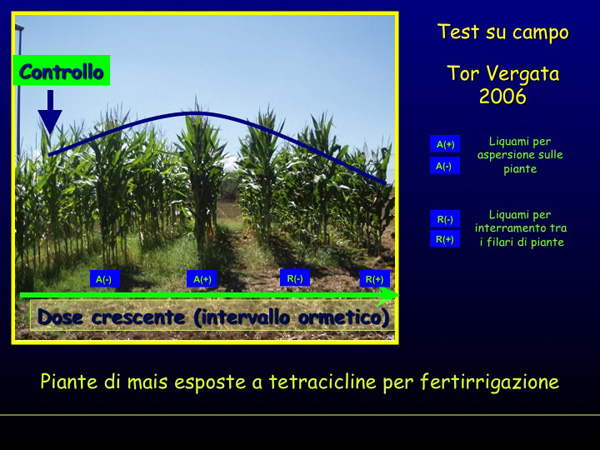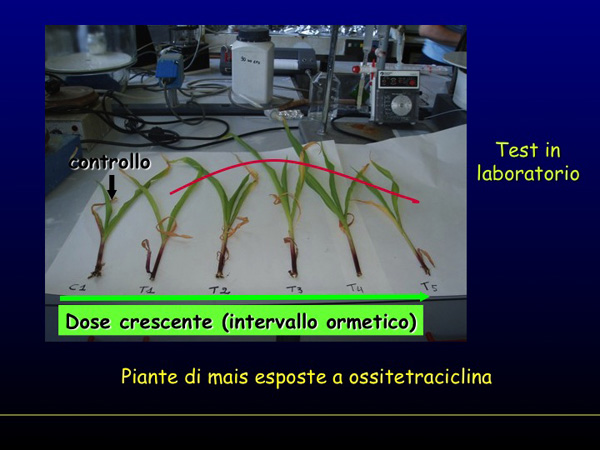Hormesis
Hormesis is an adaptive function characterized by a dose-dependent biphasic response, which occurs as a result of exposure to a very wide range of stimuli. The mechanisms of homeostatic and hormetic control are present in all biological systems, they respond independently to changes in state or alteration of regulatory mechanisms induced by exogenous agents (Amendola, Cerioli, Migliore, 2006. Hormesis: a revolution in dose-response. APAT Monographs, pp. 1-30).
Hormetic responses generally show a slight stimulation at low doses (30-60% higher than control) and inhibition at higher doses. Therefore, to satisfy the "qualitative" definition of hormesis, both the stimulatory and inhibitory effects have to be present. Hormetic response curve can be represented by a parabola, a straight or inverted U, with respect to the endpoint: a straight U if a damage is measured (eg. the increase in mortality), or the alteration of physiological functions or occurrence of diseases (like cancer or cardiovascular disease); an inverted U response is found if physiological functions such as growth or survival are measured. The studies on hormesis started in our laboratory in the '90s and have been performed on different biological systems. The most recent ones include bacteria and plants exposed to contamination by antibiotics. Studies on plants showed that the hormetic response can be found both in the laboratory (Lythrum salicaria, Zea mays) and in the field (Zea mays). Different antibiotics are able to activate the response. As regards the microorganisms, the hormetic response has been demonstrated in a reference strain of E. coli (MG1655) exposed to low concentrations of tetracycline.
These studies were funded by the Emilia Romagna Region (LR 28/98-PSA Grant. No 2005 in collaboration with CRPA - Research Centre on Animal Production, Reggio Emilia and National Institute of Health) and APAT (now ISPRA).
Migliore L., Rotini A., Thaller M.C. (2013). LOW DOSES OF TETRACYCLINE TRIGGER THE E. COLI GROWTH: A CASE OF HORMETIC RESPONSE. Dose Response, 11(4): 565-572. DOI: 10.2203/dose-response.13-002.Migliore
 Hormesis is a biphasic dose-response relationship, occurring when low concentrations of toxic agents elicit apparent improvements. In this work, the ability of sub-inhibitory concentrations of Tetracycline to induce hormetic response in a model organism was investigated. To this aim a reference strain of Escherichia coli, MG1655, was exposed to six decreasing doses of Tetracycline (between 0.00375 and 0.12 μg/ml), much lower than the Minimal Inhibitory Concentration (4 μg/ml). An hormetic increase was observed at the intermediate concentrations (0.015-0.03 μg/ml) of the tested range. The Colony Forming Unit number, indeed, rose up to 141% and 121% as compared to the control. At the highest (0.00375 μg/ml) and lowest (0.12 μg/ml) concentrations a slight decrease in CFU number was found. Results demonstrated that, in Escherichia coli, low concentrations of Tetracycline bias the bacterial numerical increase through a hormetic response; the dose-response curve describing this numerical increase is an U-inverted curve. Furthermore, these data confirm that hormesis is common to many - if not all - living systems, including bacteria, and underline the relevance of a deepened knowledge of both the effects and the possible consequences of exposure to low doses of contaminants.
Hormesis is a biphasic dose-response relationship, occurring when low concentrations of toxic agents elicit apparent improvements. In this work, the ability of sub-inhibitory concentrations of Tetracycline to induce hormetic response in a model organism was investigated. To this aim a reference strain of Escherichia coli, MG1655, was exposed to six decreasing doses of Tetracycline (between 0.00375 and 0.12 μg/ml), much lower than the Minimal Inhibitory Concentration (4 μg/ml). An hormetic increase was observed at the intermediate concentrations (0.015-0.03 μg/ml) of the tested range. The Colony Forming Unit number, indeed, rose up to 141% and 121% as compared to the control. At the highest (0.00375 μg/ml) and lowest (0.12 μg/ml) concentrations a slight decrease in CFU number was found. Results demonstrated that, in Escherichia coli, low concentrations of Tetracycline bias the bacterial numerical increase through a hormetic response; the dose-response curve describing this numerical increase is an U-inverted curve. Furthermore, these data confirm that hormesis is common to many - if not all - living systems, including bacteria, and underline the relevance of a deepened knowledge of both the effects and the possible consequences of exposure to low doses of contaminants.Migliore L., Rotini A., Cerioli N.L., Cozzolino S., Fiori M. (2010). PHYTOTOXIC ANTIBIOTIC SULFADIMETHOXINE ELICITS A COMPLEX HORMETIC RESPONSE IN THE WEED LYTHRUM SALICARIA L. Dose Response, 8(4): 414-427. DOI: 10.2203/dose-response.09-033.Migliore
In order to evaluate the hormetic response of the weed Lythrum salicaria to drug exposure we investigated the effects of the antibiotic Sulfadimethoxine by growing Lythrum plants for 28 days on culture media containing different drug concentrations (between 0.005 and 50 mg.L-1). The antibiotic was absorbed by plants and can be found in plant tissue. The plant response was organ-dependent: roots, cotyledons and cotyledon petioles, were always affected by a toxic effect, whilst internodes and leaves length, showed a variable dose-depending response, with an increased growth at the lower drug concentrations and toxic effects at the higher ones. This variable response was probably dependant on different levels of local contamination resulting from a balance between accumulation rate and drug dilution in the increasing plant biomass. As a consequence, drug toxicity or hormetic response varied according to concentration and were different in each of the examined plant organ/tissue. Thus, even if hormesis can be considered a general plant response, each plant organ/tissue responds differently, depending on the local drug concentration and exposure time.
Migliore L., Godeas F., De Filippis S.P., Mantovi P., Barchi D., Testa C., Rubattu N., Brambilla G. (2010). HORMETIC EFFECT(S) OF TETRACYCLINES AS ENVIRONMENTAL CONTAMINANT ON ZEA MAYS. Environmental Pollution, 158(1): 129-134. doi:10.1016/j.envpol.2009.07.039
Animal wastes from intensive pig farming as fertilizers may expose crops to antimicrobials. Zea mays cultivations were carried out on a virgin field, subjected to dressing with pig slurries contaminated at 15 mg L 1 of Oxy- and 5 mg L 1 of Chlor-tetracycline, and at 8 mg L 1 of Oxy and 3 mg L 1 of Chlor, respectively. Pot cultivation was performed outdoor (Oxy in the range 62.5–1000 ng g 1 dry soil) and plants harvested after 45 days. Tetracyclines analyses on soils and on field plants (roots, stalks, and leaves) did not determine the appreciable presence of tetracyclines. Residues were found in the 45-day pot corn only, in the range of 1–50 ng g 1 for Oxy in roots, accounting for a 5% carry-over rate, on average. Although no detectable residues in plants from on land cultivations, both experimental batches showed the same biphasic growth form corresponding to a dose/response hormetic curve.



